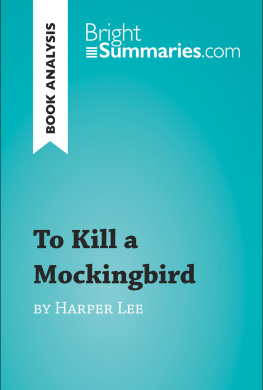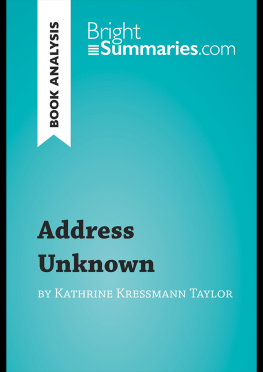The Help is Kathryn Stocketts debut novel. The author spent five years writing it and faced dozens of refusals before her manuscript was finally accepted by a publishing house. This difficulty in getting published contrasts with the enormous success of the novel upon its release, both in the United States and abroad.
This work, through its polyphonic structure, presents side by side the voices of three women living in Jackson, Mississippi, in 1962. The first two women, Aibileen and Minny are black. The third woman, Skeeter, is white and questions the rights of the society in which the three of them live. Her project to publish a book of testimonies will bring these three women closer, against all expectations, and will question the basis of the American way of life.
Summary
The novel is divided into 34 chapters, the narration of which is alternately delivered by Aibileen, Minny and Miss Skeeter, with the exception of chapter 25, where an external narrator takes over. The story is set in the United States during the sixties, a period when racism was still very present.
A critical book
Aibileen is 53 years old and works at the Leefolts house as a servant. She is very fond of the young Mae Mobley, who is in her care and whose parents neglect her.
Minny, Aibileen's best friend, is also a servant. Unfortunately, she was fired from Miss Walters because she had been accused of theft by Hilly Holbrook, a deeply racist woman. Hilly suggested the installation of separate toilets for blacks and whites. Aware of the injustice of the way she is treated, Minny takes her revenge in a way that is too terrible to mention. Fortunately, she is quickly hired by Celia Foote, who does so in secret. To keep her position, she must abide by one single rule: if Johnny Foote, Celias husband, should come home earlier than planned, she must hide in the toilets. Yet, one day they meet by chance and they agree to pretend that he is still none the wiser.
Miss Skeeter, a young woman from a good family, goes back home to her parents after her years of studying at the University of Ole Miss. Her mother dreams of seeing her married and announces the upcoming visit of Stuart Whitworth, who, in her opinion, is quite a catch. Skeeter meets him, but she does not wish to marry. Her dream is to work for a publishing house in New York. Following the advice of Elaine Stein, an editor from New York, she is hired at the Jackson Journal, but is put in charge of a domestic column, which she does not like. She feels estranged from the preoccupations of her best childhood friends, Hilly and Elizabeth, and wonders what the surprise was that Constantine, the maid who raised her, had mentioned, and why she left the house before she came back. To find an answer, she asks these questions to Aibileen who informs her that Constantine was fired after her daughter, whose skin is very pale, behaved in an unacceptable manner at the Phelans.
Shortly after, Aibileen realizes that Skeeter wishes to change things and she talks about it to Minny. At the same time, they learn that Robert, a young black man, has been beaten by two white men after he used the toilets without being allowed to do so, which deeply shocks Skeeter. This crime is repeated some time later when Medgar Evers, the secretary of the local sector of the association for the defense of black civil rights, is killed by members of the Ku Klux Klan. The young woman then decides to write a book about the situation of the black people and asks Aibileen to collaborate. At first, Aibileen refuses, mentioning the risks that such a project would pose for her.
Elaine Stein is interested in Skeeters project, who tells her that she is sure that she can gather testimonies, although this is far from the truth. However, Aibileen calls Skeeter back to tell her that she will agree to testify and that she will talk to Minny: the adventure of the book is launched. Minny makes her aware of the seriousness of the situation, and that it is not a game. Yet this does not stop Aibileen from mentioning the project to other black servants who agree to participate.
A project that brings people together
Skeeter secretly goes to Aibileens to begin the interview, but her method is not up to scratch and they postpone the interview. Two days later, they try again: this time, Aibileen reads Skeeter what she had written before. She also asks the young woman to borrow books for her from the public library which is reserved for the white people; Skeeter takes this opportunity to look for information about the Jim Crow laws. Later, Skeeter tells Aibileen that she has forgotten her bag in which there are books about the situation of the black people at the league where all the while ladies meet, and that Hilly has found it.
Good to know: the Jim Crow laws
The Jim Crow laws were declaration orders that were applied in the United States. They distinguished between the citizens according to their origins and instored racial segregation. For example, black people could not go to the same public places, schools, etc. as white people.
Meanwhile, Hilly is campaigning to have toilets set up especially for the servants, on the pretext hygiene measures.
As for Skeeter, she wonders what brought Stuart to break off his engagement with his ex-fiance, Patricia, and her parents officially meet the Whitworths. In the end, the engagement does not take place.
Because of a mistake purposely made by Skeeter, the Holbrooks garden is filled with old toilets. Hilly, who organizes the yearly charity ball, refuses the help of Celia, who has recently had a miscarriage. She also hears that Minny is now working at the Footes.
Celia discovers that Minnys husband beats her. The two women are attacked by an exhibitionist and defend themselves valiantly. Celia prepares for the charity ball, at which she hopes to reconcile with Hilly. But on the day of the event, Celia is noticed because of her attire and tears Hillys dress. Hilly wins the first prize, which is a chocolate pie prepared by Minny. Later, Celia makes fun of Hilly, because she knows that Minny, out of revenge for being unjustly dismissed, had given Hilly a chocolate pie and waited until she had eaten it to tell her that she had made it with her excrements.



















